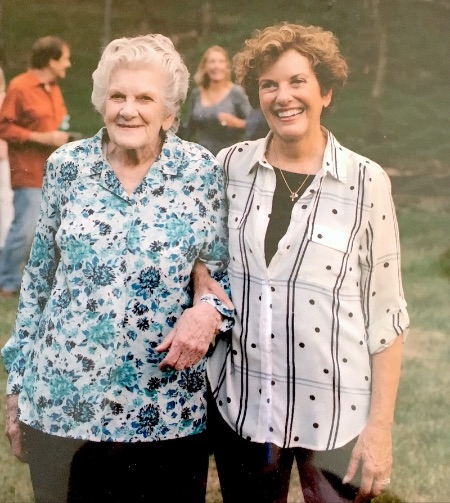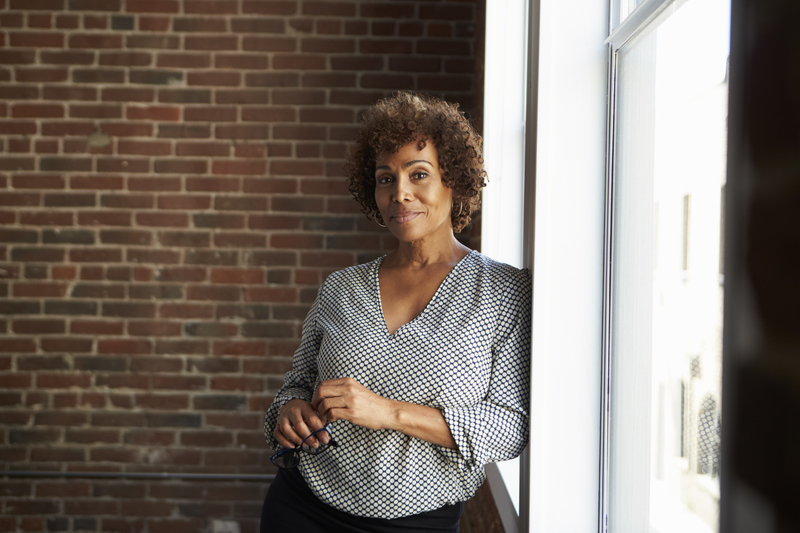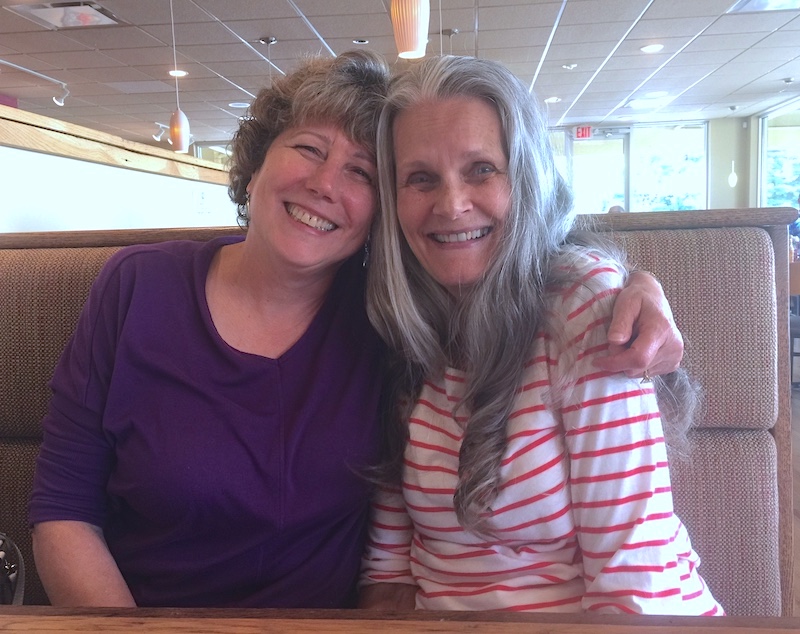They say age ain’t nothing but a number.
OK, fine.
But which number?
When someone asks, “How old are you?” do they mean your chronological age – which is how many years you’ve been on the earth?
Do they mean your biological age, which is how old you are in terms of your physical health, aging cells, biomarkers, etc.
Or do they mean your subjective age, or how old you feel in your mind – your self-image?
It’s interesting to think about. On the one hand, you can’t do anything to change your chronological age. You are 52 or 79 or whatever, and the number reliably changes once a year (until it doesn’t).
Of course, we can change our biological age by practicing healthy habits, like exercising regularly, eating well, and avoiding cigarettes, alcohol and drug abuse.
What about that last one – subjective age? Well, now, that one’s much more a mind game.
Minus 20 percent
A Pulitzer Prize-winning writer in an Atlantic essay said people seem to have an “intuitive grasp of this highly abstract concept – ‘subjective age.’”
The BBC wrote about the idea, too.
And the American Psychological Association even investigated whether our feelings about our “subjective age” can affect health and longevity.
Studies show that teenagers and young adults tend to think of themselves as older – maybe because they’re eager to start living their adult lives and being perceived as legitimate.
But after 40 or so, people begin thinking of themselves as being 20 percent younger. So, if you’re 60, you might think of yourself as being 48.
It’s why we are sometimes startled by looking in the mirror. Or by seeing current pictures of childhood friends on Facebook and wondering why they look so old.
Neither good nor bad
Here’s the thing. Subjective age isn’t good or bad, just like chronological age on its own. If you’re 72, then you’re 72. If you instinctively feel 58 or so, that’s fine, too.
What’s NOT fine is being biologically older because you’re not exercising, eating right, and taking care of yourself. You can change that one!
There might be some scientific reasons for feeling like we’re a little younger than we are – or even a little older, since that happens, too.
It doesn’t mean we’re delusional. It doesn’t mean we’re desperately trying to be young again.
But it might mean that we still feel like we have a lot of life ahead of us, that we have things to do and place to go and people to meet.
That we’re not ready to give up on life, or ourselves, just yet.
And that’s where fitness comes into play. When you have the strength, agility and endurance of health and vigor, guess what? You have a higher quality of life, more independence, and greater ability to do what you want to do.
We’re here to help show you how. Come see us today.
Want Longevity? ‘Keep Moving’
Do you want to live to be 100?
More people are reaching that mark nowadays than ever before, and the trend will skyrocket in the coming decades.
The topic of longevity is having a moment, darn near approaching a cultural obsession. What can we do to live NOT JUST LONGER but also BETTER. What role does exercise play in all of this?
Here’s just one example.
Toni Stahl, at left in the photo above, lived an amazing life. As a young Navy wife, she was at Pearl Harbor on December 7, 1941. She survived cancer. She farmed, enjoyed waterskiing, and worked into her 90s part-time at a hospital.
She also worked out three times a week at a gym past her 100th birthday. She liked balance and strength conditioning, and the friendships she made.
“I do as I feel, and I like to stay active and be around people,” she said. “I still want to keep moving. If I sat down, I think I’d just give up.”
Mrs. Stahl died in March just a few days after she turned 105, a short death to close a long, healthy life.
More Centenarians Coming
Reaching 100 is more common but remains rare. Just a 0.03% of the population in the United States and the United Kingdom is 100 or older today, according to statistics.
That’s double the number of 100-year-old Americans 20 years ago – and a lot less than the 589,000 expected by the year 2060.
We’re living longer because of a range of reasons – like better medicine and less smoking. An individual’s life expectancy depends on factors like genetics, location, gender and lifestyle, including exercise
A study published in the journal of the American Medical Association found that the spectacular benefits of exercise have no age limit.
“Whether you’re in your 40s or your 80s, you will benefit in the same way,” said the study’s senior author, Dr. Wael Jaber, a cardiologist at the Cleveland Clinic.
Sedentary people are almost four times as likely to die early as those who exercise regularly, says the study. It looked at 122,000 people who were tested on treadmills over 13 years.
“There actually is no ceiling for the benefit of exercise,” he said. “There’s no age limit that doesn’t benefit from being physically fit.”
‘You Gotta Keep Moving’
Mrs. Stahl wasn’t alone among 100-year-olds who believed in exercising.
One of them, known as “Mr. Bruno,” was working out three times a week when he hit 100.
He had simple advice for anyone hoping to follow in his footsteps, which he shared on a video posted on Facebook.
“Get off you’re a** and go to the gym,” he said. “You gotta keep moving. If you’re not exercising, you’re gonna go down, down, down.”
Let’s keep you moving for as long as possible. Call us today.
Healthy Recipe, Shrimp Bowls
Try this this health-packed, one-bowl meal adapted from a recipe in Michelle Braxton’s “Supper with Love.” No fancy ingredients needed. The trick is to cook the vegetables and shrimp separately, but in a pan that’s just hot enough to turn the surface of a nice shade of golden. A dab of butter is added in the last minute when the shrimp are almost done, along with the garlic and tamari, bringing out the garlic’s aroma without burning it. Squeeze citrus over the shrimp and you’re ready to assemble your bowl with the cooked veggies and grain of choice. Serves 3-4. Ingredients3 or 4 tablespoons Spicy Mayo Sauce (recipe below)Shrimp and Vegetables:
- 1-pound large shrimp, peeled and deveined (thawed if frozen)
- ½ teaspoon fine sea salt
- 6 or 7 grindings freshly ground black pepper
- 1 tablespoon canola or other neutral oil (plus more as needed)
- 1 medium zucchini, halved lengthwise and thinly sliced
- 1 medium yellow onion, thinly sliced
- 1 red bell pepper, cored and cut into strips or bite-size pieces
- 1 tablespoon unsalted butter
- 1 garlic clove, minced
- 1 tablespoon tamari or soy sauce
- ½ lemon or lime
For assembly:
- 2 cups cooked brown rice, quinoa, or other grains
- ¼ cup sliced green onions
- 2 tablespoons toasted sesame seeds
Instructions
- Make the Spicy Mayo Sauce as directed below; refrigerate until serving.
- Place the shrimp in a bowl and season lightly with salt and pepper; set aside.
- In a large nonstick or cast-iron skillet, heat the oil over medium-high heat. Add the zucchini slices, onions, and bell pepper and cook, undisturbed, on one side about 3 minutes, or until vegetables begin to turn caramelize. Give it a stir and sauté until the onions and peppers are softened and the zucchini is cooked through but still a bit firm, 3 to 5 minutes. Transfer the vegetables to a bowl and set aside.
- Add a little more oil to the skillet if needed and set on medium heat. Add the shrimp and cook on one side until pink and slightly caramelized, about 2 minutes. Flip the shrimp and cook on the other side a minute or two longer, just until pink and opaque, taking care not to overcook. Add the butter and once melted, add the garlic and tamari and sauté until fragrant, about 30 seconds.
- Squeeze the lemon or lime juice over the shrimp and season with a little salt and pepper if desired. Remove from the heat.
- Assemble the bowls: Add a scoop of rice or grain of choice to each bowl. Top with shrimp and vegetables. Drizzle with some of the Spicy Mayo Sauce, sprinkle with scallions and sesame seeds, and eat.
Spicy Mayo Sauce Makes about 2/3 cup Ingredients
- ½ cup mayonnaise (vegan is fine)
- 1 tablespoon Sriracha or other hot chili sauce, or to taste
- 1 tablespoon tamari or soy sauce
- 1 tablespoon toasted sesame oil
- 1 tablespoon water, plus more, as needed
Instructions
- In a small bowl, whisk together the mayonnaise, Sriracha, tamari or soy sauce, sesame oil, and 1 tablespoon of water, or enough to achieve desired consistency.
- Transfer to a small airtight container and refrigerate until ready to serve, or up to a week.
— Susan Puckett is an Atlanta-based food writer and cookbook author.
Break Free from Negative Self-Talk
We all talk to ourselves about ourselves.
What kind of things do you say?
That you’re overweight, lazy, and too old to be fit?
A lot of us struggle with an inner voice that repeats nonsense like that.
But you don’t have to let it keep you from exercising, eating right and managing stress so you can keep doing what you want. There’s so much more potential to life well after 50 – like travel, physical independence, playing with the grandkids, enjoying sports and hobbies… just for starters.
You deserve all that and more.
And you can have it if you start by adjusting your thoughts.
Change Your Thoughts
We can’t control which thoughts pop into our minds. But we can choose which to hold and nurture. Those thoughts become actions, which become habits, which lead to new experiences and… yes! New thoughts.
So, let’s replace that negative self-talk with positive statements, attitudes and experiences.
Here are some tactics that help.
Practice an attitude of gratitude. Whenever you feel down, take a pen and paper and write your blessings. They can be big or small, important or whimsical, related to physical health or spirituality or anything else. When you see what you’ve written, your mood will reverse itself. It’s impossible to feel depressed when our hearts are full of thanks.
Instead of saying, “There’s something wrong with me because I don’t have X, Y and Z,” you’ll be saying, “Look at all these wonderful things in my life.”
Set realistic goals. We don’t have to look like fitness models or win Olympic medals. We don’t have to be what we used to be. And accepting that is key to treating yourself right. We’re here to help you see where you want to go – and then enjoy the success of reaching those goals.
Instead of saying, “I’m so stupid to think I could be 25 again,” you’ll be saying, “Hey, I’m feeling better every day.”
Focus on progress, not perfection. We’re always raised to be so results-driven, aren’t we? But physical fitness doesn’t have to be like that! It’s fun and empowering to get stronger, to gain more endurance, and to improve agility. We’ll celebrate every little win with you! Remember: It’s a journey, not a destination.
Instead of saying, “I’m such a loser because I can’t wear those pants,” you’ll be saying, “I’ve lost 10 pounds since I started.”
Excuses Are Easy
If you want to find an excuse to deny yourself health and fitness, then you will always find it.
But please don’t do it because your inner saboteur is telling you that you’re too old, out of shape, or set in your ways.
Because you’re not.
You get to decide the life you want from here on out, no matter your age or physical condition.
Why the Buddy System Works So Well
At 73, Carolyn found herself at a crossroads. Years of spinal trouble and chronic pain had left her too weak to walk to the car alone, let alone drive. “Everybody was really sweet – ‘Let’s take care of Nana,’” the retired midwife recalls. “But I didn’t want to be that old yet. I still wanted to have a life.” So, Carolyn started going to a fitness studio twice a week for small group training, which she liked right away. But things took off when she invited her longtime friend Karen to join her. Both became stronger, more limber and gained better endurance. And they enjoy a tradition of working out twice a week together and going for lunch on Fridays at their favorite Thai restaurant. They’re proof positive that the buddy system works. How to encourage exercise success While some people enjoy working out alone, others find working out with a friend increases their chances of success because:
- It’s more fun.
- They hold each other accountable.
- They share positive feedback and encouragement.
- It’s a great social outlet and helps them overcome any nervousness about starting to work out.
Dr. Pamela Rackow of the University of Aberdeen had heard anecdotal evidence of all this. “I wanted to know if this was true,” she said – and if it was, then why. Her research found that having an exercise companion does, indeed, increase the amount of exercise someone does. And the best qualities that made a good partner had more to do with emotional support than “practical” support like never missing a session. Other tips for being a good workout partner include:
- Sticking to a list of valid excuses for missing a workout
- Staying positive
- Avoiding judgment and sugarcoating alike
- Supporting healthy eating
- Celebrating positive milestones
‘It would almost force me’ Karen, 60, is a retired medical assistant. She spent the last several years as a caregiver to her mother and sister. “In between taking care of everybody else, I didn’t have much time for myself,” she says. That included spending time with friends. So, joining Carolyn at the gym was a way to practice self-care and enjoy social interaction. She wanted to get stronger for the physical work of keeping up her 15-acre farm. “The buddy system is the reason I decided to do this with Carolyn,” she says. “I knew that going with her, it would almost force me.” She and Carolyn motivate each other but aren’t competitive. “It’s like you have a date with this person and you don’t want to let them down,” Carolyn says. Both women enjoy the full-body workouts involving strength training, stretching and balance exercises. “I like the way I feel,” Carolyn says, with confidence to enjoy her grandchildren, cook family meals, and travel to the beach. “I wasn’t ready to be done with life, and I wanted to be able to do certain things. I’m glad I got better, so now I can have some more fun.”





